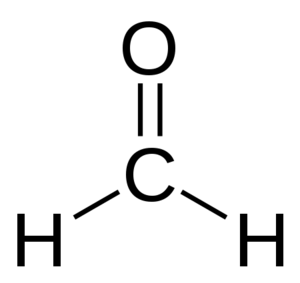Carcinogens
The process of carcinogenesis is a long-term multi-stage process. Chemical, physical, biological and genetic factors can be the cause. For example, proto-oncogene mutations, suppressor gene mutations, and repair gene involvement.
Carcinogenesis[edit | edit source]
Carcinogenesis can be divided to three stages:
- Initiation – cell damage at the DNA level. It involves the activation of oncogenes, the alteration of genes regulating apoptosis and the inactivation of oncosuppressor genes. All this results in the expression of alternative gene products and a loss of expression of regulatory products.
- Promotion – accumulation of damage, functional and morphological changes.
- Progression – violations of mitosis control and manifestations of neoplastic growth.
Classification according to the level of action[edit | edit source]
Genotoxic carcinogens[edit | edit source]
Genotoxic carcinogens act mainly in the first phase. They damage DNA and their effect is usually irreversible. They have a primarily threshold-free effect. Chemical carcinogens are characterized by their electrophilic nature and ability to form covalent bonds with DNA.
Primary (direct) carcinogens have these properties without the need for biotransformation (eg alkylating agents), secondary (indirect) carcinogens after biotransformation (eg aflatoxins, polycyclic aromatic hydrocarbons, nitrosamines).
Epigenetic carcinogens[edit | edit source]
They do not interact directly with DNA. They act by other mechanisms (immunosuppression - purine derivatives, hormonal mechanisms - estrogens, cytotoxic effects, etc.). These substances are sometimes called promoters and build on previous DNA damage in the cell.
Complex carcinogens[edit | edit source]
They have both genotoxic and epigenetic effects.
Classification of carcinogens according to IARC[edit | edit source]
International Agency for Research on Cancer (IARC, based in Lyon) categorizes chemical substances, physical factors and work processes into five groups according to danger.
Group 1 - human carcinogens with a sufficiently proven effect[edit | edit source]
First group includes 119 items[1]. Carcinogenicity has been confirmed according to epidemiological studies in the human population. It includes:
- Asbestos, benzene, benzidine, beryllium, 6-membered chromium compounds, nickel, mineral oils, coal tar, carbon black, trichlorethylene, polychlorinated biphenyls, vinyl chloride, aromatic amines (eg benzidine), cadmium, ionizing radiation, radon, radium, dust from hardwood, formaldehyde, SiO2, components of tobacco smoke, from biological factors such as EB virus, hepatitis B and C virus, from physical influences such as UV radiation.
Group 2 - potentially carcinogenetic effect[edit | edit source]
Evaluated based on experimental studies on animals. Carcinogenic to humans with a higher or lower degree of probability:
- 2A – probably carcinogenetic
Includes 81 items.
- DDT (dichlorodiphenyltrichloroethane), o-toluidine, lead and its inorganic compounds, benzanthracene, benzidine dyes, etc.
- 2B – perhaps carcinogenetic
292 items.
- chloroform, methylmercury, nitrobenzene, styrene
Group 3 - substances not evaluable due to lack of scientific evidence[edit | edit source]
505 articles.
- chromium and its compounds other than hexavalent, coal dust, tea.
Group 4 - substances that are unlikely to be carcinogenic to humans[edit | edit source]
1 article: caprolactam.
Some selected carcinogens[edit | edit source]
- Benzene (Group 1)
It causes leukemia with a latency of 5-15 years through a reactive metabolite (benzene epoxide). Exposure in the chemical industry - production of explosives, cosmetics, pharmaceutical industry, is contained in unleaded gasoline as an anti-knock additive instead of the original tetraethyl lead. CAVE!!! may be released if the catalyst does not function properly.
- Vinyl chloride monomer (Group 1)
It causes angiosarcoma of the liver, hematoma, lung cancers, CNS tumors. Reactive metabolite (vinyl chloride epoxide).
- Aromatic amines
Benzidine, o-toluidine and others. They cause bladder cancer.
- Coke oven gases and PAHs
Coal tar, crude mineral oil, PAHs (polycyclic aromatic hydrocarbons). They cause lung and skin cancer.
UV radiation
- UVC - 100–280 nm, absorbed in the atmosphere
- UVB - 280–315 nm, absorbed by DNA, forms the formation of pyrimidine-pyrimidine bonds
- UVA - 315–400 nm, formation of free radicals
Malignant skin tumors and melanoma.
- Ionizing radiation
It acts directly on DNA and creates fractures, but more often indirectly through ionization and the formation of oxygen radicals. These effects are called stochastic (random). The probability of stochastic effects increases linearly with increasing radiation dose. These are the late effects of radiation that are probably threshold-free. At lower doses, lack of threshold and linearity are hypothetical.
A risk factor was determined for different tissues, which estimates the probability of tumor growth after irradiation of the target tissue with 1 Sievert. E.g. for active bone marrow 50/104 Sv, for large intestine 85/104 Sv, ie when 10,000 people are irradiated one Sv each, they will have 50 added (in addition to spontaneous cases) leukemias and 85 large intestine cancers over 30-40 years . The risk factor is a quantitative indicator characterizing the carcinogenic effects of radiation on humans.
High risk factor for lung cancer, leukemia, gastric cancer, colon, thyroid, breast, lesser risk of bladder cancer, esophageal, liver, bone, skin and ovarian tumors.
Links[edit | edit source]
Related articles[edit | edit source]
External links[edit | edit source]
- International Agency for Research on Cancer
- Classification of effects according to IARC
- Carcinogens (Czech wikipedia)
- Carcinogen (English wikipedia)
Used literature[edit | edit source]
- BENCKO, Vladimír, et al. Hygiena : Učební texty k seminářům a praktickým cvičením. 2. přepracované a doplněné vydání vydání. Praha : Karolinum, 2002. 205 s. s. 99. ISBN 80-7184-551-5.
- PELCLOVÁ, Daniela, et al. Nemoci z povolání a intoxikace. 2. přepracované a doplněné vydání vydání. Praha : Karolinum, 2006. 207 s. s. 133-137. ISBN 80-246-1183-X.
- KŘEMEN, J. Molekulární kancerogeneze. Přednáška pro studenty 1. LF UK. Ústav biochemie a experimentální onkologie 1. LF UK.
Reference
- ↑ IARC. AGENTS CLASSIFIED BY THE IARC MONOGRAPHS, VOLUMES 1–117 [online]. Poslední revize 24 October 2016, [cit. 2016-11-25]. <http://monographs.iarc.fr/ENG/Classification/index.php>.



